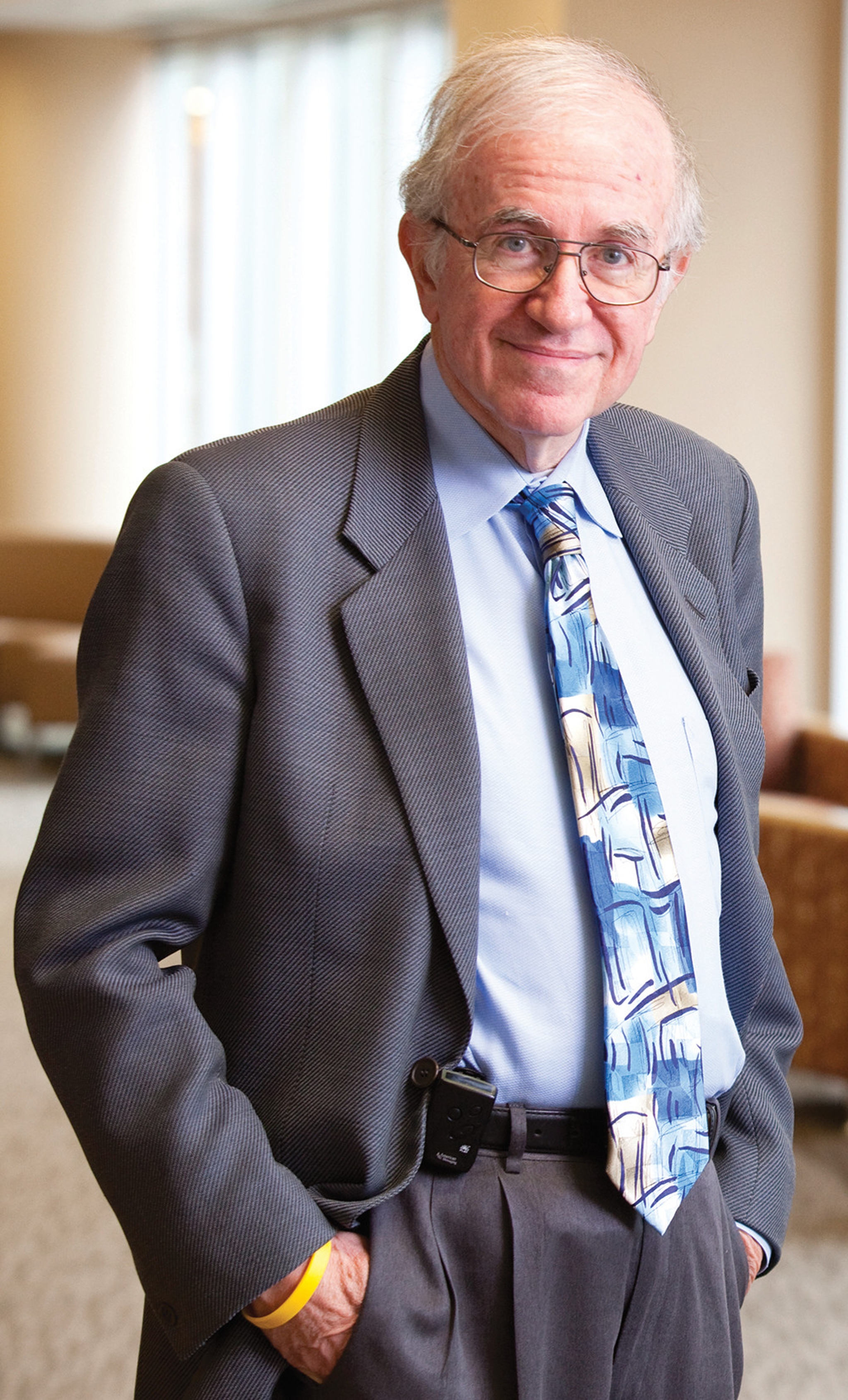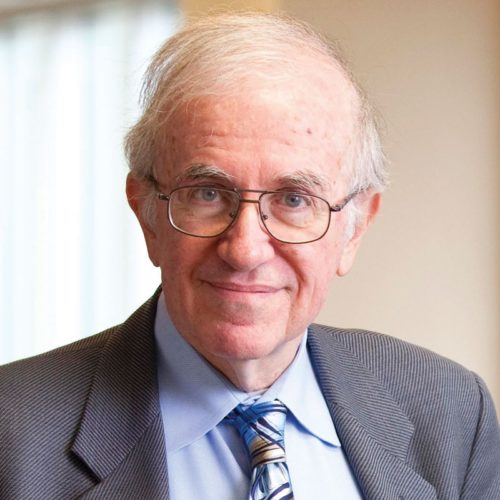#40 Lawrence (Larry) Einhorn (1942-)
Our number 40, of the top 50 most influential doctors in history, is Dr. Lawrence Einhorn who has less written about him on the internet than any of previous 10 we’ve mentioned—even those dating back to nearly the dawn of medicine!
However, he is deserving of at least as many words on the internet as any of the others—he did invent an (almost) cure for testicular cancer after all!
Dr. Lawrence Einhorn, discoverer of the Cisplatin “cure” for testicular cancer
Lawrence Einhorn (1942- ) – #40
Gentle Giant—pioneer in cancer treatment
Early Life and Education of Lawrence H Einhorn
What IS known about him pretty much begins with a Wiki statement that: Lawrence Henry Einhorn was born in 1942 in Dayton Ohio; and ends with his own statement in an interview that: “I always knew I was going into medicine, my father was a physician (general internist) and I thought I’d be going into practice with him.”
Nothing before or in between and the biography of his education and early training is equally sparse.
He received a B.S. from the University of Iowa in 1965 and his M.D. three years later.
He did an internship at Indiana University Hospital in 1967, a residency in internal medicine and oncology at Indiana University in 1968 and became a captain in the medical corps of the U.S. Air Force in 1969 until 1972. He did a fellowship in Hematology/Oncology at the M.D. Anderson Hospital Tumor Institute in Houston, Texas then returned to Iowa University Medical Center in 1973.
While he was doing his residency, Einhorn’s father had become ill and retired, so going into practice with him was no longer an option. Lucky for us, his first love was the experience he had in, and contribution he felt he could give to, the area of cancer treatment.
He wanted to concentrate on diseases which were sensitive to chemotherapy (by 1973 standards) and basically instituted experimental treatments with Cisplatin which brought locally-metastatic testicular cancer treatment from a cure rate of only 10% to 95%! And, reduced the treatment time to only 12 weeks.

While many physicians state publicly that “patients are the most important,” Larry seems to live by it. There is more written about his patients than the doctor, beginning with American cyclist, Lance Armstrong; who, in 1996, was battling stage three testicular cancer which had spread to his brain, lungs and abdomen.
Because of Einhorn’s reputation at IU, Armstrong sought care there and by February 1997 was declared cancer-free. That year Armstrong founded the Livestrong Foundation (formerly Lance Armstrong Foundation) to support cancer patients and making Einhorn the first foundation professor of Oncology in 2006.
Later life:
Einhorn remains a vigorous combatant against cancer to this day (2017) and has won numerous awards and accolades for his battles, both medical and political; including Israel’s Peace Prize and the Vermeil Medal of Paris.
Currently, still at Iowa University, he is turning his “platinum” ideas toward the battle with the number one killer cancer in America: lung cancer, in which the five-year survival is still only 4 percent once it has spread.
Nearly 160,000 Americans die from the disease each year—more than prostate, breast and colorectal cancers combined. Especially troubling is the fact that the disease is on the rise among nonsmokers, particularly young women.
Let’s hope that he can do it for lung cancer like he did for testicular cancer.
Biographic Summary
Lawrence H. Einhorn, oncologist
Born: 1942, Dayton Ohio
Died: living (2017)
Education: B.S. and M.D. from University of Iowa; internship and residency at Indiana University; oncology fellowship at M.D. Anderson
Known for: revolutionary treatment and cure of testicular cancer
Books: not given
Parents: not given
25 Posts in Top 50 Doctors (top50) Series
- 27 - Charles D. Kelman - Cataracts – 9 Mar 2023
- 28 - Cicely D. Williams, Kwashiorkor, Breastfeeding, Whistleblower – 21 Jun 2022
- 29 - Dame Cicely Saunders, Hospice – 23 Apr 2018
- 30 - David L. Sackett, Evidence-based Medicine – 2 Apr 2018
- 31 - E. Donnall Thomas & Joseph Murray, Bone Marrow Transplants – 23 Feb 2018
- 32 - Elizabeth Blackwell, women in medicine – 29 Jan 2018
- 33 - Elisabeth Kübler-Ross, stages of grief – 5 Jan 2018
- 34 - Watson & Crick, DNA – 2 Dec 2017
- 35 - Mahmut Gazi Yaşargil, Micro-Surgery – 24 Oct 2017
- 36 - George Papanicolaou, Cytopathology, Cancer – 29 Sep 2017
- 37 - Dr. James Parkinson, Parkinson's Disease – 1 Sep 2017
- 38 - Dr. John Snow, cholera – 20 Aug 2017
- 39 - Dr. Joseph Kirsner, GI Joe – 27 Jul 2017
- 40 - Lawrence (Larry) Einhorn, chemotherapy – 16 Jun 2017
- 41 - Robert Koch, modern bacteriology – 21 Mar 2017
- 42 - Stanley Dudrick, TPN – 28 Feb 2017
- 43 - Stanley Prusiner, neurodegenerative diseases – 25 Jan 2017
- 44 - Victor McKusick, medical genetics – 3 Jan 2017
- 45 - Virginia Apgar, anesthesiology & newborn care – 12 Nov 2016
- 46 - William Harvey, circulation – 12 Oct 2016
- 47 - Zora Janžekovič, burns – 26 Sep 2016
- 48 - Helen Taussig, blue babies – 3 Sep 2016
- 49 - Henry Gray, anatomy – 3 Jul 2016
- 50 - Nikolay Pirogov, field surgery – 11 Jun 2016
- Top 50 Doctors: Intro/Index – 10 Jun 2016
Advertisement by Google
(sorry, only few pages have ads)

